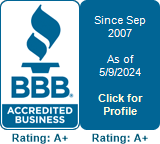3 Tips for a More Efficient Payroll Process
Admin • June 8, 2022

If you follow these three tips, you can streamline your payroll process and make your business operations more efficient.
Gather Employee Information in Advance
To properly prepare payroll, you need to gather your employees' data in advance. This way, you can be sure that you have all the necessary information on hand and that every piece of information is accurate.
You'll need crucial information for every worker, including:
- Employee name
- Social Security number
- Date of birth
- Address and phone number
The idea is to have all the necessary information before you start the payroll process to ensure that everything runs smoothly and without any delays in payment. You should also store this sensitive information in a secure location so only authorized personnel have access. This strategy can help you prevent payroll fraud.
Automate Your Payroll Process as Much as Possible
Several software programs can help you automate the payroll process. These programs integrate seamlessly with your payroll and time tracking systems.
Payroll software systems automate many of the tasks involved in payroll because they help you calculate taxes and prepare paychecks. Time tracking systems can also help keep track of employee hours worked. This way, you'll know exactly how much to pay your employees for each payroll period.
You can also set up automatic payments for your employees. A direct deposit system electronically deposits paychecks into your employees' bank accounts on payday. This system is convenient for both you and your employees since there's no need to physically hand out paychecks.
When you automate your payroll process, you free up time that you'd have otherwise spent on manual tasks. But remember that not all tasks can be handled easily by software. There are some payroll tasks, such as timesheet reviews, that require a lot more scrutiny. Automation errors in these payroll tasks can be hard to track down and fix, especially if you have little knowledge about payroll processing.
If you're not sure which payroll tasks you can automate, an accounting professional can help. With their involvement, you won't have to worry about subtle automation errors that can create heavy losses.
Reconcile Payroll and Bank Statements Regularly
Statement reconciliation is where you match the amount of money that you deposit into your payroll account with the money that's withdrawn from the account. If there are any discrepancies, you'll need to figure out where the error is and perform quick fixes.
The reconciliation of your payroll and bank statements also helps you pay employees on time. You won't make mistakes that would make you overpay your workers, something that can have costly financial implications.
In addition, reconciliation of payroll and bank statements can help you keep track of employee hours and vacation days. This way, you ensure that you pay your employees correctly for their time off.
If you don't have time to reconcile payroll and bank statements yourself, hire an accountant or bookkeeper to do the job for you. This option can be a lifesaver if you have a complex payroll system or if you don't feel confident in your payroll management skills.
With these tips, you can find the right balance to ensure that your payroll system works for you and your business. Contact Quality Bookkeeping Services Inc. for more information on how you can ensure maximum payroll efficiency.
DIY bookkeeping might sound good but could cost you money, time and lead to errors. Read this blog to learn the benefits of professional bookkeeping now!
Ensuring a steady cash flow is not just about survival but also about unlocking your business's immense potential. Read about our strategies for management.
Ensuring a steady cash flow is not just about survival but also about unlocking your business's immense potential. Read about our strategies for management.
Has your business gone through a big change recently? Learn about three situations that may require you to redefine your business tax commitments.
While petty cash may be a minor part of your operation, it's an important tool to have around. Read this blog to learn how to manage it effectively.
As a small-business owner, you know that every penny counts. Read this blog to learn how you can maximize your small company’s tax deductions.
Do you spend a lot on accounting? If your annual accounting spending is higher than the average, discover the following accounting mistakes to avoid.
Forensic accounting deals with the identification, analysis, and presentation of financial evidence. Read this blog to learn what kinds of cases they serve.












